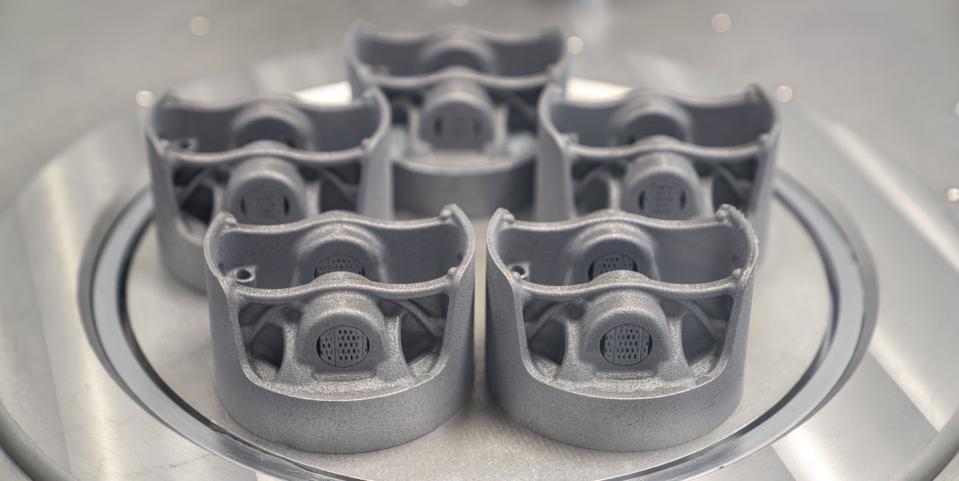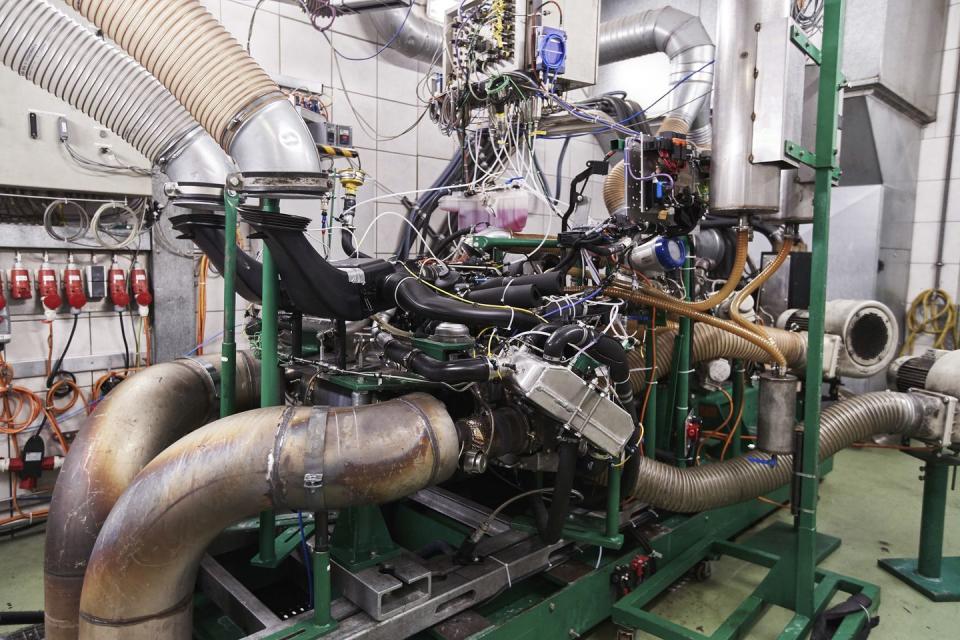Porsche's 3D Printed Pistons Could Add 30 HP to the 911 GT2 RS

3D-printed pistons, a joint effort by Porsche and two supplier partners, are 10 percent lighter and have an integrated cooling system, making them more efficient.
The pistons are printed using a metal powder that is melted with laser beams and built up one layer at a time.
3D-printed parts in high-volume series Porsche vehicles won't likely happen for about another 10 years.
Sure, if you own the equipment, you could 3D-print a tiny Porsche at your home. You could even 3D-print engine parts if you want. Of course, they would all fail within seconds if you tried to actually use them in a vehicle. That is, unless you'ee Porsche itself. The German automaker has 3D-printed pistons for its 911 GT2 RS that are lighter, stiffer, and have a integrated and closed cooling system that results in increased power and efficiency.

The automaker, in partnership with German auto suppliers Mahle and Trumpf, printed the pistons as a development exercise to show that it's possible to make engine parts this way that will operate under intense pressure and heat. In fact, after the pistons were printed, finished, and analyzed for defects, they were placed on an engine test bench and simulated a 200-hour endurance drive without any issues.

But before they could test the parts, they had to be made. Instead of laying down layers from a print head as you would in a home 3D printer, Mahle created a high-purity metal powder that's placed in a Trumpf printer that uses laser beams to heat and melt said powder one layer at a time. These layers are built up until they have a piston that's not only 10 percent lighter, it also has higher stiffness than the traditional forged part. It also has an integrated cooling system.
This integrated cooling system could not be added to the piston using the traditional methods of forged production. Thanks to the additive manufacturing, the temperature in the piston's ring zone is reduced by more than 68 degrees Fahrenheit.

 Yahoo Autos
Yahoo Autos 